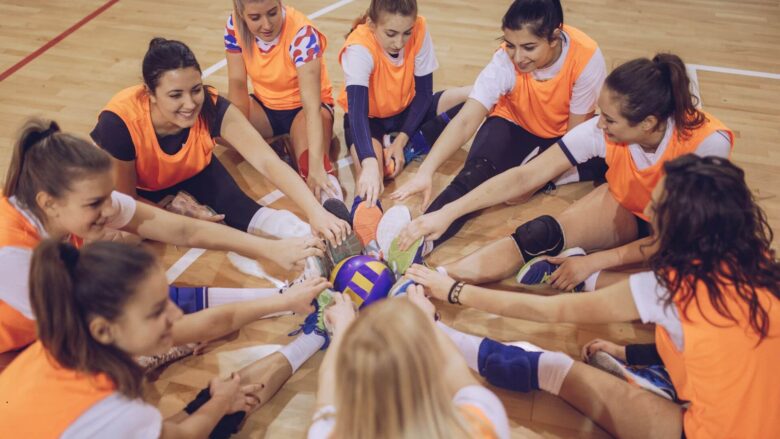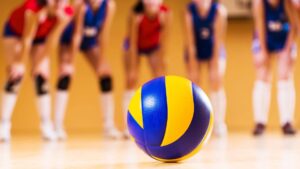College volleyball in the United States is more competitive, athletic, and strategically advanced than ever before. With elite coaching, high-performance training programs, and growing media exposure, NCAA volleyball — especially on the women’s side — has become a pipeline to the professional and international stages. Whether you’re a fan, a player, or a scout, knowing the top teams in action right now helps you understand the evolving landscape of collegiate volleyball.
This article highlights the best college volleyball teams in the U.S. at the moment, breaking down their recent performances, star athletes, coaching leadership, program infrastructure, and what makes each one a dominant force both on and off the court.
What Makes a Top College Volleyball Program?
While win-loss records are important, the best programs also stand out through:
- Consistency in national rankings
- Deep runs in the NCAA Tournament
- High-level recruiting classes
- Development of All-Americans and Olympians
- State-of-the-art facilities and training support
- Academic success and graduation rates
- Strong fan engagement and media coverage
We also consider team culture, innovation in tactics, coaching stability, and adaptability to changing competition trends, including the increasing presence of international talent.
1. University of Wisconsin – Badgers
Why They’re on Top:
The Badgers have built a powerhouse program with back-to-back Final Four appearances, a national title in 2021, and a consistently elite presence in the Big Ten.
Program Snapshot:
- Coach: Kelly Sheffield (since 2013)
- Recent Achievements: NCAA Champions (2021), Final Four (2022, 2023), Big Ten Champions
- Key Players: Sarah Franklin (OH), Gulce Guctekin (L), Anna Smrek (MB)
- Facilities: UW Field House & Kohl Center — regularly set attendance records
What Sets Them Apart:
- Physical dominance at the net with one of the tallest lineups in NCAA
- Disciplined serve-receive and transition play
- Tactical consistency and high-pressure experience
Wisconsin’s coaching staff emphasizes data analytics and match prep, setting the standard for modern training techniques.
2. University of Nebraska – Cornhuskers
Why They’re Elite:
A storied program with five NCAA titles and a deep legacy in the sport, Nebraska combines tradition with cutting-edge player development.
Program Snapshot:
- Coach: John Cook (since 2000)
- Recent Achievements: NCAA Runner-Up (2021, 2023), Final Four appearances
- Key Players: Lexi Rodriguez (L), Harper Murray (OH), Bekka Allick (MB)
- Facilities: Devaney Center — leads the NCAA in volleyball attendance
What Sets Them Apart:
- Defensive tenacity led by elite liberos
- Strong freshman impact year after year
- Home-court advantage with unmatched crowd support
Nebraska’s national recruiting network and investment in holistic player development (nutrition, academics, leadership) is world-class.
3. Stanford University – Cardinal
Why They’re Dangerous:
Stanford has long been synonymous with volleyball excellence, producing more Olympians than any other NCAA program and maintaining a legacy of success.
Program Snapshot:
- Coach: Kevin Hambly (since 2017)
- Recent Achievements: NCAA Champions (2016, 2018, 2019), consistent Top 10 ranking
- Key Players: Kendall Kipp (OPP), Kami Miner (S), Elia Rubin (OH)
- Facilities: Maples Pavilion
What Sets Them Apart:
- Smart, fluid offense and tactical adaptability
- High academic standards attract top scholar-athletes
- Long-term consistency with a strong alumni network
Stanford’s program is a model of balance between elite athletics and rigorous academics.
4. University of Texas – Longhorns
Why They Dominate:
Texas volleyball combines athleticism, recruiting power, and a vibrant culture to produce some of the most exciting volleyball in the NCAA.
Program Snapshot:
- Coach: Jerritt Elliott (since 2001)
- Recent Achievements: NCAA Champions (2022, 2023), multiple Big 12 titles
- Key Players: Madisen Skinner (OH), Asjia O’Neal (MB), Ella Swindle (S)
- Facilities: Gregory Gymnasium — known for its loud, electric atmosphere
What Sets Them Apart:
- Dynamic offensive system built around explosive attackers
- Deep bench with multiple All-American candidates
- Emphasis on strength, speed, and competitive edge
Texas’s media visibility, NIL (Name, Image, Likeness) presence, and modern brand appeal attract elite recruits nationwide.
5. University of Louisville – Cardinals
Why They’re Rising:
A relatively new powerhouse, Louisville has quickly climbed into elite territory with strategic recruiting and system-driven play.
Program Snapshot:
- Coach: Dani Busboom Kelly (since 2017)
- Recent Achievements: NCAA Runner-Up (2022), Final Four (2021, 2023), ACC Champions
- Key Players: Elena Scott (L), Anna DeBeer (OH), Phekran Kong (MB)
- Facilities: L&N Federal Credit Union Arena
What Sets Them Apart:
- High-speed tempo offense with aggressive serving
- Lockdown backcourt defense led by Scott
- Emphasis on team chemistry and leadership development
Louisville is reshaping the ACC’s competitive landscape and proving they belong among the national elite.
6. University of Pittsburgh – Panthers
Why They Matter:
Pitt has built a top-tier program through smart international recruiting and one of the most disciplined systems in college volleyball.
Program Snapshot:
- Coach: Dan Fisher
- Recent Achievements: Final Four (2021, 2022, 2023)
- Key Players: Rachel Fairbanks (S), Valeria Vazquez Gomez (OH), Chiamaka Nwokolo (MB)
What Sets Them Apart:
- Emphasis on ball control and smart shot selection
- Deep roster depth that allows tactical versatility
- Underrated in media but highly respected in coaching circles
Pitt’s sustained success and fearless style have elevated the program into perennial contention.
7. Penn State University – Nittany Lions
Why They’re Still Relevant:
With seven national titles under their belt, Penn State remains a respected force in the NCAA landscape, even during transitional years.
Program Snapshot:
- Coach: Katie Schumacher-Cawley
- Recent Achievements: NCAA Sweet 16s and Elite Eights
- Key Players: Allie Holland (MB), Taylor Trammell (MB), Zoe Weatherington (OH)
What Sets Them Apart:
- Strong blocking schemes
- Consistent serve-and-pass game
- Strong legacy and tradition of success
Though in a rebuilding phase, Penn State’s infrastructure ensures they’ll never stay out of the Top 10 conversation for long.
Rising Programs to Watch
Oregon Ducks
- Led by Coach Matt Ulmer
- Known for creativity in offense and solid recruiting
- Home to standout players like Mimi Colyer
Washington Huskies
- Strong tournament pedigree
- Traditionally disciplined defense and serve receive
Minnesota Golden Gophers
- Transitioning under new head coach Keegan Cook
- Excellent training environment and strong alumni support
The Role of Coaching and Staff Infrastructure
Elite college programs are built not just on players, but also on coaching staffs, performance teams, and institutional investment. Successful programs typically feature:
- Experienced head coaches with NCAA Tournament success
- Assistant coaches specializing in defense, scouting, or recruiting
- Full-time strength & conditioning coaches
- Sports psychologists and nutritionists
- Academic advisors and compliance officers
This holistic support model allows athletes to thrive and programs to maintain excellence across seasons.
What About Men’s Volleyball?
While women’s volleyball dominates in NCAA participation and media, men’s collegiate volleyball is gaining momentum with standout programs offering elite development and high-level competition.
Top Men’s Programs:
- University of Hawai’i: Back-to-back NCAA champions (2021, 2022)
- UCLA Bruins: Historic powerhouse with renewed energy
- Long Beach State: Renowned for its physicality and system play
- Penn State (Men’s): East Coast leader in men’s volleyball
- Ohio State and Loyola-Chicago: Multiple national championships in the past decade
Men’s volleyball features a smaller court, faster tempo, and fewer substitutions, offering a different but equally thrilling game.
How Rankings Are Determined
College volleyball rankings are typically based on:
- Win/loss record and strength of schedule
- RPI (Rating Percentage Index)
- AVCA Coaches Poll and NCAA Selection Committee criteria
- Performance in key matchups (conference clashes, ranked opponents)
- Player availability (injuries, transfers)
Some ranking systems also include advanced analytics (e.g., hitting efficiency, opponent point differential) to provide more predictive accuracy.
NIL and Its Impact on College Volleyball
The advent of NIL (Name, Image, and Likeness) rights is beginning to reshape recruiting and athlete branding in volleyball.
Notable Trends:
- Athletes from top programs signing sponsorships with apparel, nutrition, and media brands
- Increased social media presence and personal branding
- Recruits considering NIL potential alongside athletic fit and academics
Programs with strong institutional backing, national exposure, and large fanbases (like Texas, Nebraska, and Wisconsin) have a competitive edge in the NIL era.
Final Thoughts
The college volleyball scene in the U.S. is as dynamic and competitive as it’s ever been. From historic programs like Nebraska and Penn State to rising giants like Louisville and Pitt, the NCAA landscape is full of talent, passion, and innovation.
Whether you’re an aspiring athlete, recruiter, or passionate fan, understanding which teams are excelling right now gives insight into the future of the sport. These programs not only dominate today’s matches — they are shaping tomorrow’s professionals and Olympians.
Keep an eye on these schools throughout the season. Their stories, rivalries, and athletes define the heart of college volleyball.
Explore More:
- Learn about the How to Prepare for Your First Volleyball Competition



